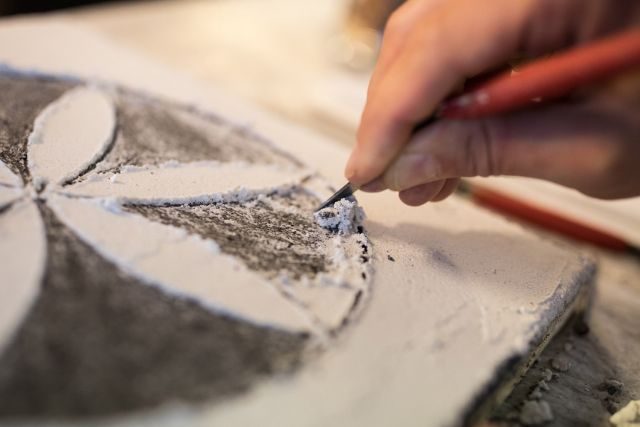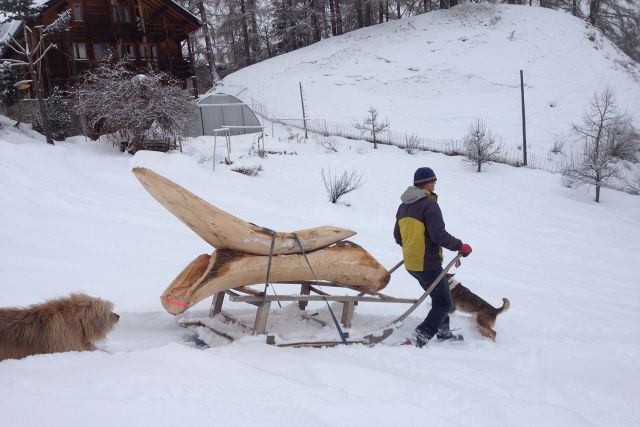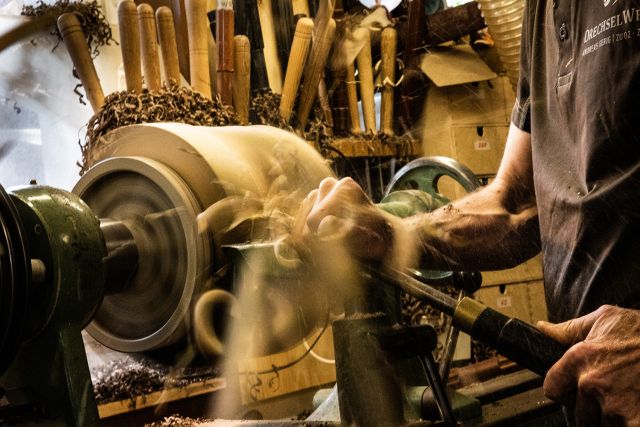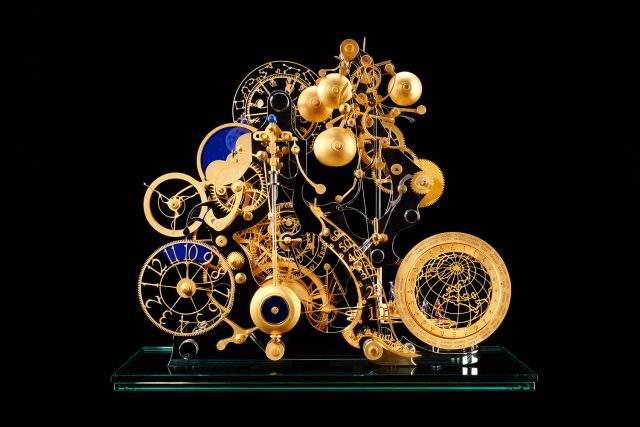This six-star rosette, sometimes called Venus star, Aphrodite star or star of Mary, is symbolic of femininity and beauty. The symbols used in the making of sgraffito are usually traditional patterns that are recreated with slight variations, but always holding the same ancient meaning.
Height 35 cm
Width 35 cm
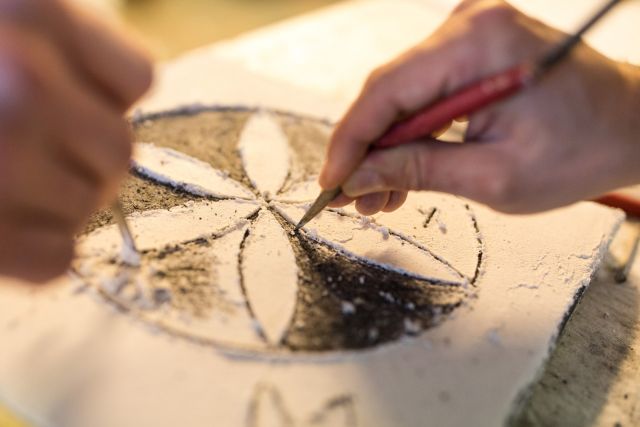
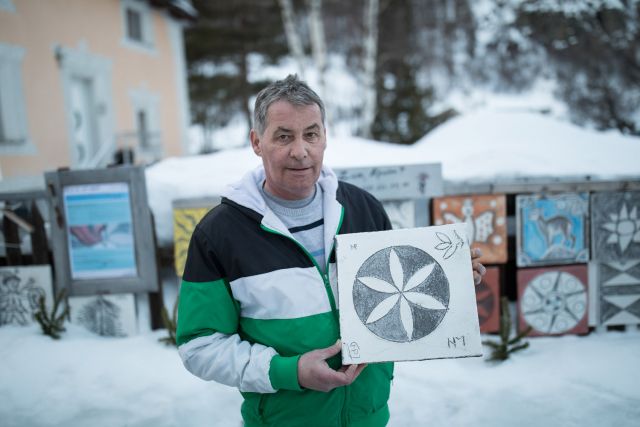

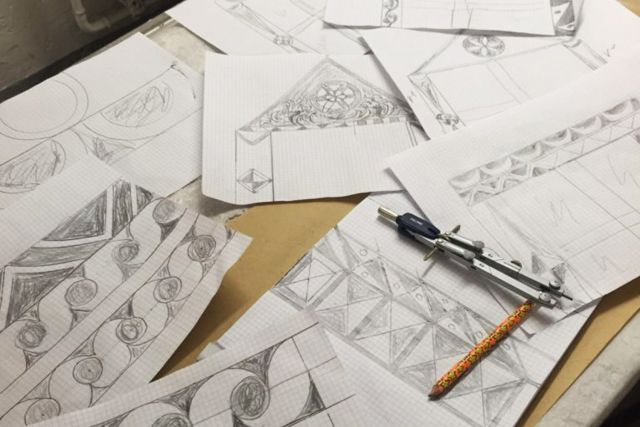
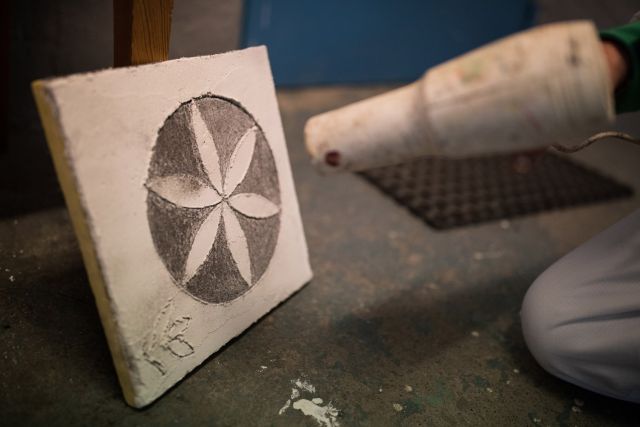
Josin Neuhäusler
- Plaster and stucco worker
- Susch, Switzerland
- Master Artisan
Surpunt 91, 7542 Susch, Switzerland
By appointment only
+41 792213478
A family tradition
- • Josin is an emblematic figure of sgraffito
- • Sgraffito is a cherished craft in Engadine
- • He is now committed to teaching it to others
Josin Neuhäusler was born in Engadine and was destined to perpetuate the local craft, sgraffito. A technique of carving façade decorations that can be seen on many houses of the region, the craft was brought back from southern Italy around the 15th century, becoming a local Engadine tradition. The Romansh word “sgraffito” comes from the Italian “sgraffiare”, meaning to scratch. Being the third generation of his family to master the technique, Josin decided to focus on passing on his knowledge to those eager to discover the ways of sgraffito. People flock from all over the country to get a chance to participate in a masterclass with Josin, who gladly teaches all ages and all levels, for the pleasure of sharing his craft.
Read the full interviewWorks
Photo: ©Josin Neuhäusler

Photo: ©Josin Neuhäusler
This Venus star, sometimes called six-star rosette, Aphrodite star or star of Mary, is symbolic of femininity and beauty. The symbols used in the making of sgraffito are usually traditional patterns that are recreated with slight variations. The star stays the same, but the ornaments around it can vary from one piece to another
Height 35 cm
Width 35 cm

Photo: ©Josin Neuhäusler
The façade of this house was restored by Josin and his father in 1987; it is the family house where the craftsman grew up. Located in the village of Susch in the region of Engadine, it bears the inscription “Chasa Solena”, meaning “Solena house” in Romansch. The sgraffito decorations are focused around the windows, the door and on the outer part of the façade, and the motifs used are traditional ones of the sgraffito art.

Photo: ©Josin Neuhäusler
The façade of this old mill was restored by Josin Neuhäusler in 2017. Using the technique of sgraffito as it was first intended, to decorate houses, Josin created all sorts of traditional ornaments, from texts to decorations surrounding the windows and doors, to drawings of plants.





